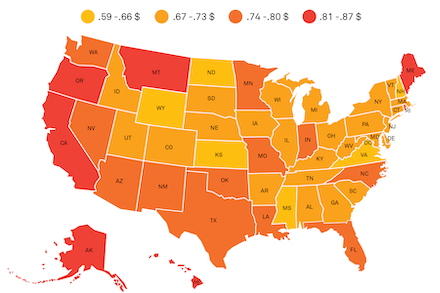Creating partnerships: Closing the gender pay gap by challenging the status quo together

This year, Equal Pay Day—which indicates how far into the year a woman must work to receive the same wage that a man received the previous year—fell on March 12. The National Partnership for Women & Families marked the day by drawing attention to the persistent wage disparities that hamper millions of working women, along with the steps that we and our allies can take to close this pay gap once and for all.
According to U.S. Census data, among both full-time and part-time workers, women are paid just 78 cents for every dollar paid to men. Every year, gender pay gaps rob women of more than $1.6 trillion in lost wages. And the steepest disparities are experienced by women of color. Black, Latina, Native and Indigenous, and many Asian American/Pacific Islander (including Bangladeshi) women all are paid significantly less than both white men and white women.
There are many interconnected forces driving these disparities. Three key factors include a lack of strong work-family policies, occupational segregation, and gender discrimination.
Challenging gender norms
The United States remains the only industrialized economy without a national paid leave policy that would enable employees to take time off from work to care for loved ones without sacrificing income. This disproportionately harms women, who perform the vast majority of caregiving. Due to deeply ingrained gender norms, it is often the women who feel compelled to limit the number of hours they work or leave the workforce altogether—which sets them back in terms of compensation compared with their male colleagues.
Additionally, women are often clustered in jobs predominantly filled by females, such as child care workers, home health aides, and nursing and medical assistants—a phenomenon referred to as “occupational segregation.” Many of these jobs have been undervalued and underpaid for generations precisely because they’re performed by women and seen as “women’s work.” At the same time, women have been excluded from higher-paying industries where men disproportionately work, like STEM and the construction and trades fields. As a result, many women are steered into sectors where they are likely to be paid less.
Furthermore, gender- and race-based biases continue to shape how many view women’s roles and relegate women to lower pay and less financial security. A 2018 Pew Research Center report, Women and Men in STEM Often at Odds Over Workplace Equity, found that more than half of female STEM workers have experienced gender discrimination. In Double Jeopardy? Gender Bias Against Women in Science, authors Joan C. Williams, Katherine W. Phillips, and Erika V. Hall concluded that “bias, not pipeline issues or personal choices, pushes women out of science—and that bias plays out differently depending on a woman’s race or ethnicity.”
Given such obstacles, we must be intentional in undertaking concrete efforts to close pay disparities. For example, without such interventions, the wage gap for Latinas will not be eliminated until the year 2207 if current trends hold.
Fortunately, there are actions that leaders of all backgrounds can take to help change things for the better.
Working to change policies to close the pay gap
A series of policy interventions can create greater pay transparency, strengthen equal pay enforcement, bolster women’s workforce participation, and reduce discriminatory practices. There are a multitude of ways advocates, employers, and philanthropies can make an impact—from lending support to federal equal pay legislative efforts, to embracing improvements within their own workplaces, to consistently investing in the research, policy development, and public education necessary to help make the case for change. It’s also critical to recognize that a multi-pronged strategy is essential to addressing the many factors driving the wage gap, rather than focusing on just one facet of the problem.
If the factors behind the pay gap are multifaceted, so are the benefits of gender equity, including economic growth. Eliminating wage gaps would give the average working woman an additional $11,450 each year, which could go toward a mortgage down payment or paying for household staples like groceries.
How funders can get involved
Given that nonprofits dedicated to improving women’s lives receive roughly 2% of all charitable giving, any new investments from funders prioritizing equity are welcome and much needed. There are unique strategies funders can adopt to tackle the pay gap. More general operating support can give organizations greater flexibility to adapt to our ever-changing social and political landscape. Longer, multi-year investments can also help ensure that organizations have the sustained resources needed to pursue a mixture of short-term, mid-term, and long-term strategies.
These sustained commitments are pivotal because of the substantial time required to tackle the intertwining issues behind gender and racial wage gaps. It takes years of patience and persistence to strengthen caregiving supports through bold solutions like passing a national paid leave initiative. The same is true when it comes to shifting cultural mindsets that devalue women and uprooting segregation and discriminatory practices that have plagued our economy for generations. Often, these kinds of transformational changes only occur following the realization of many incremental steps.
Nonprofits and funders take the lead
The National Partnership for Women & Families will continue to advance gender equity in the workplace—together with stakeholders including community activists and national advocates, to elected officials and policymakers, and leaders in business and philanthropy. We believe that valuing the work of all workers can create pathways for women from all walks of life to finally live in a society where they can reach their full potential.
Photo credit: andreswd via Getty Images






